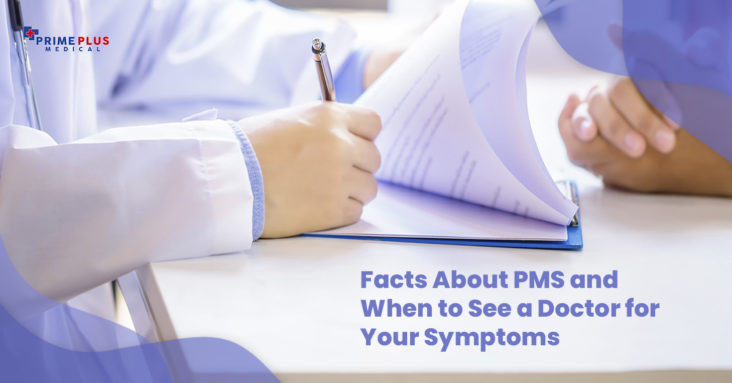If you are a woman of childbearing age, you are most likely very familiar with the term PMS or premenstrual syndrome. You might even be more familiar with the symptoms than you wish you were. But, did you know some facts about PMS?
PMS symptoms vary for every woman and change from one cycle to the other for the same person. Figuring out if the symptoms you experience are considered normal can be a rather challenging task.
In the spirit of aiming for a healthier 2022, we would like to share all you need to know about PMS. Also, we would like to share when you need to see a doctor for your PMS symptoms.
To know more facts about PMS, you should know first what is PMS?
The first facts about PMS you should know is the definition of it. PMS or premenstrual syndrome is the name for the group of physical, psychological, and behavioral symptoms experienced by women. It can happen up to two weeks before their period and ends once menstruation begins. Almost all menstruating women can experience PMS. Researchers have shared that women in their late 20s to early 40s are most likely to experience PMS.
Various sources have stated that there are at least 100 different recorded symptoms of PMS. However, according to the National Health Service of England, the most common symptoms include feeling anxious or irritable, tiredness or trouble sleeping, bloating, breast tenderness, headaches, and spotty skin.
Studies have reported that approximately 1 in every 20 women experiences PMS symptoms that are severe enough to interfere with their everyday life. This more severe form of PMS is knowns as premenstrual dysphoric disorder or PMDD.
Facts about PMS you should know is what causes PMS?
Second facts about PMS that you should know is what causes PMS. Until now, experts have not been able to explain the exact cause of PMS. Many believe that PMS is linked to the fluctuating levels of hormones and serotonin in the woman’s body. It happens throughout their menstrual cycle.
Is there anything that I can do to make the symptoms less intense?
Experts agree that it is highly essential to maintain a healthy lifestyle to help ease your PMS symptoms. That means exercising regularly, eating a healthy and balanced diet, practicing good sleep hygiene, and practicing relaxation techniques such as yoga or meditation. For pain management, you can take painkillers such as paracetamol or ibuprofen.
When should I see a doctor?
If you have been struggling in dealing with your PMS symptoms and they have affected your daily activities regularly, you should see your GP.
Your GP can help determine if you have premenstrual dysphoric disorder or PMDD. They also can offer you treatment to manage the symptoms. Your GP might also refer you to see an OB/GYN.
If you have been experiencing one or more of the following symptoms, you should also see your GP as soon as possible.
- Intense mood swings on top of your physical symptoms
- You experience chronic depression during PMS
- You feel withdrawn from social life and human contact during PMS
- The length of your period changes significantly
- Your intense PMS symptoms are followed by either heavy bleeding during your period and/or large blood clots throughout your period
- You feel extremely tired during PMS
- You experience extreme acne flare-ups during PMS
If you believe that you have been experiencing severe symptoms of PMS or one (or more) of the above symptoms, you must not ignore them. Please make sure to set up an appointment with your GP as soon as possible. And if you happen to be in South Bali, our team of English-speaking doctors at Prime Plus Medical is available 24/7 to assist walk-in patients.

